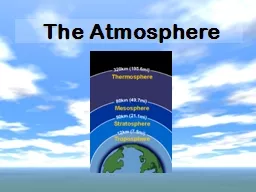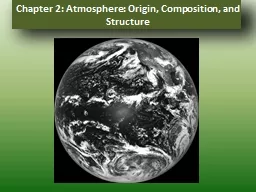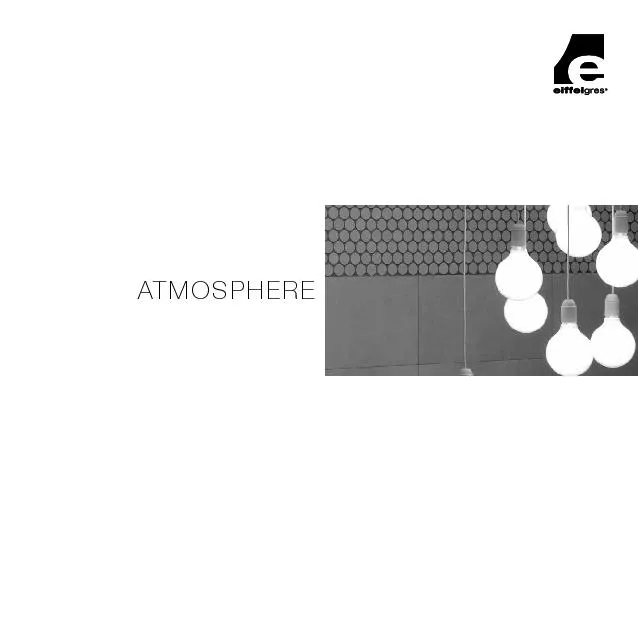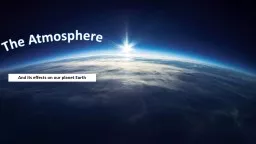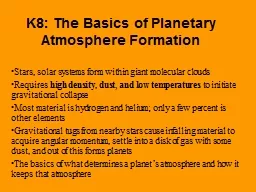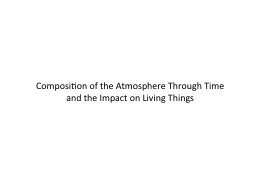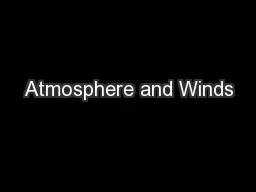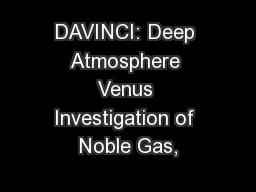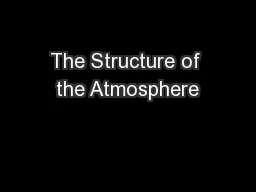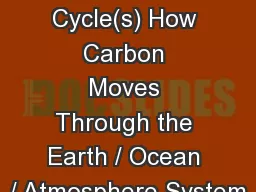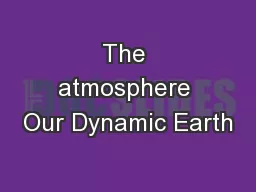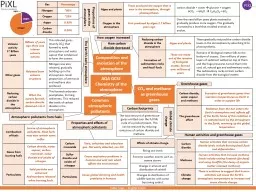PPT-The Atmosphere
Author : faustina-dinatale | Published Date : 2016-07-21
Definition of the Atmosphere The layer of gases surrounding Earth composed mainly of 78 nitrogen and 21 oxygen and other gases water vapor dust pollutants etc Brainpop
Presentation Embed Code
Download Presentation
Download Presentation The PPT/PDF document "The Atmosphere" is the property of its rightful owner. Permission is granted to download and print the materials on this website for personal, non-commercial use only, and to display it on your personal computer provided you do not modify the materials and that you retain all copyright notices contained in the materials. By downloading content from our website, you accept the terms of this agreement.
The Atmosphere: Transcript
Download Rules Of Document
"The Atmosphere"The content belongs to its owner. You may download and print it for personal use, without modification, and keep all copyright notices. By downloading, you agree to these terms.
Related Documents

